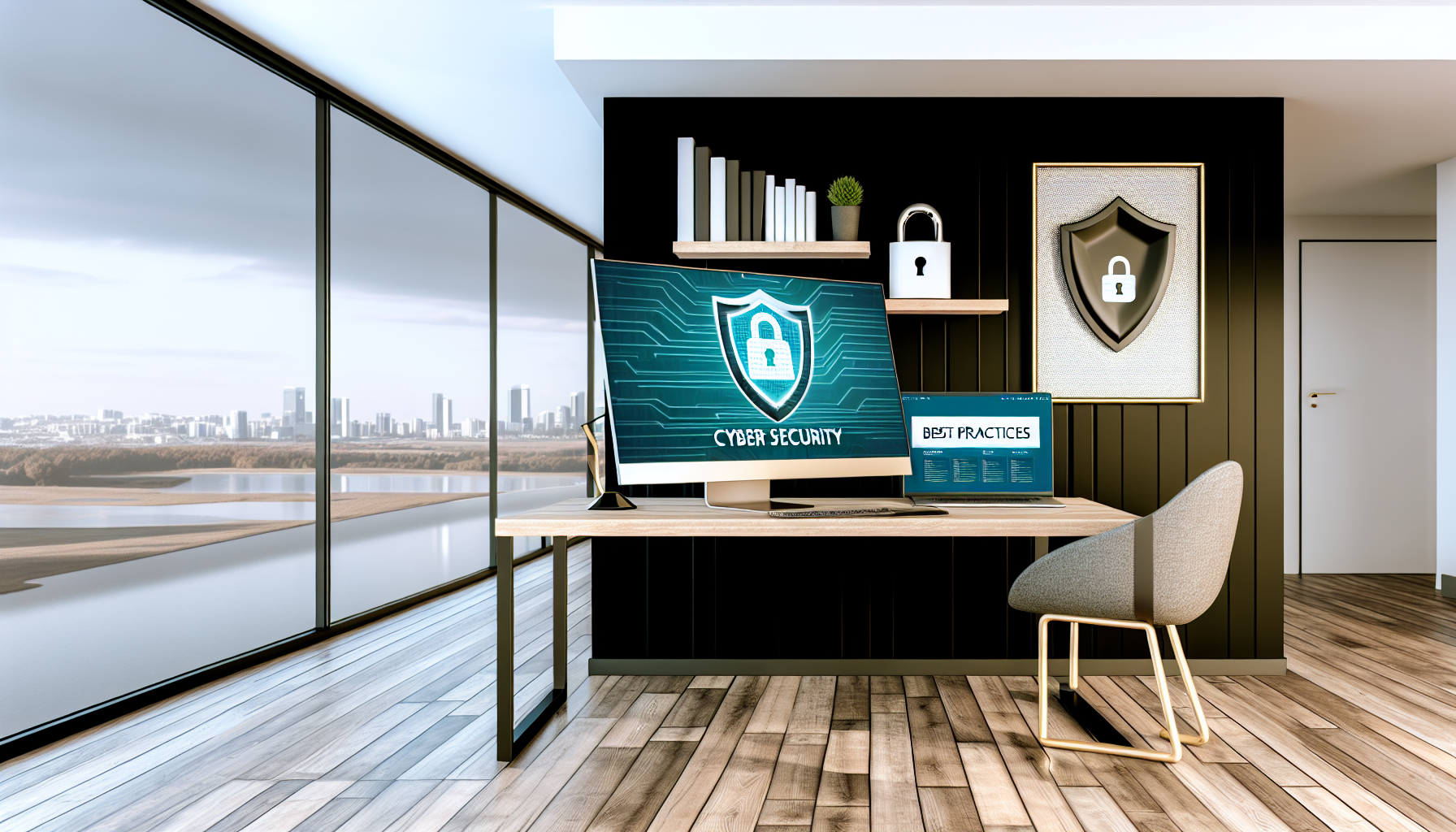A secure home network is essential for protecting your personal information and devices from cyber threats.
Remote work has reshaped the modern workplace, enabling employees to work comfortably from home. While this flexibility improves productivity and work-life balance, it poses significant cybersecurity risks. With cyberattacks targeting remote workers on the rise, securing your home office is now critical. This guide explores essential cybersecurity practices to protect your digital workspace.
Secure Your Network: Understanding the Cybersecurity Landscape
When the COVID-19 pandemic forced organizations to adopt remote work protocols quickly, many overlooked critical cybersecurity measures. This created new vulnerabilities that cybercriminals have exploited, launching phishing scams, ransomware, and exploiting insecure networks. A 2020 IBM survey found a 60% surge in cyberattacks on remote work environments.
Best Practices for Safeguarding Your Home Office
Remote workers must adopt effective cybersecurity practices in their home offices to address these risks. Following these steps will help protect your online activity and sensitive information:
- Secure Your Home Network
- Change default passwords for routers and IoT devices to strong, unique ones.
- Enable WPA3 security for better Wi-Fi protection.
- Use a separate guest network for untrusted devices.
- Strengthen Passwords and Authentication
- Use complex passwords with letters, numbers, and symbols.
- Enable two-factor authentication (2FA) on all accounts.
- Regularly Update Systems
- Keep operating systems, antivirus software, and other applications up to date.
- Turn on automatic updates to ensure you don’t miss critical patches.
- Use a VPN for Secure Connections
- Encrypt your internet connection with a VPN, especially on public Wi-Fi.
- Select a VPN provider with strong security and privacy policies.
- Watch for Phishing Scams
- Look out for suspicious emails with misspellings or strange addresses.
- Verify requests for sensitive data through official channels.
- Secure Your Devices
- Install trusted antivirus software and run regular scans.
- Lock your devices when not in use, using passwords or biometrics.
Stay Educated and Proactive
Cyber threats continually evolve, and staying informed is key. Attend webinars, take cybersecurity training, and foster open discussions about online safety with your team. Building a security-conscious culture ensures everyone takes responsibility for protecting sensitive information.
By following these best practices, remote workers can minimize risks and create a safer home office environment.
Best Practices for a Secure Home Office
Secure Your Home Network
- Change Default Passwords: Many routers and IoT devices come with default passwords that cybercriminals can easily exploit. Replace these with strong, unique passwords.
- Use WPA3 Security: If supported, enable WPA3 on your Wi-Fi router. It provides better protection against unauthorized access than older protocols.
- Enable a Guest Network: Set up a separate guest network for less secure devices. This reduces potential vulnerabilities and protects your primary network.
Employ Strong Passwords and Authentication
- Create Strong Passwords: Use a mix of letters, numbers, and special characters, and avoid easily guessed details like birthdays.
- Implement Two-Factor Authentication (2FA): Enabling 2FA, which uses a secondary verification method like a code sent to your phone, adds an extra layer of account security.
Keep Software and Systems Updated
- Regular Updates: Ensure your operating system, antivirus, and apps are always up to date to patch vulnerabilities.
- Automatic Updates: Enable automatic updates to receive security patches as soon as they’re available.
Utilize a Virtual Private Network (VPN)
- Encrypt Your Connection: A VPN secures your internet connection, protecting your data from interception by cybercriminals, especially on unsecured Wi-Fi networks.
- Choose a Reputable Provider: Research VPN providers and opt for one with strong security practices and transparent privacy policies.
Be Alert to Phishing Scams
- Avoid Suspicious Emails: Phishing scams often look like legitimate emails. Watch for red flags like misspellings or unfamiliar sender addresses.
- Verify Requests: Confirm authenticity with the sender through official channels for sensitive information requested via email.
Secure Your Devices
- Install Antivirus Software: Use reliable programs to protect your devices from malware and other threats. Scan for issues regularly.
- Lock Your Devices: To prevent unauthorized access, set up device locks using pins, passwords, or biometrics (e.g., fingerprints).
Practice Safe File Sharing and Handling
- Use Encrypted File-Sharing Tools: When sharing sensitive files, opt for platforms that provide secure, encrypted transfers.
- Restrict Access: Grant document access only to authorized individuals and review permissions regularly.
Educate Yourself and Your Team about Your Secure Home Network
- Stay Updated on Cybersecurity Trends: Take courses, attend webinars, or participate in training sessions to learn about new threats and best practices.
- Build a Secure Culture: Encourage open dialogue about security awareness and make cybersecurity a team-wide responsibility.
Secure Your Devices
- Install Antivirus Software: Use reliable antivirus software to protect your devices from malware. Schedule regular scans to detect and address security issues promptly.
- Lock Your Devices: Always lock your computer and mobile devices when not using them. For added security, set up biometrics like facial recognition or fingerprint scanning.
Practice Safe File Sharing and Handling
- Use Encrypted File Sharing Platforms: To keep your data safe, choose secure, encrypted services when exchanging sensitive files.
- Restrict Access to Confidential Files: Grant file access only to authorized individuals. Regularly review and update permissions on shared documents.
Educate Yourself and Your Team about your
- Stay Updated on Cybersecurity: Cyber threats change quickly. Attend webinars, training sessions, or online courses to learn the latest best practices.
- Promote a Security-Conscious Culture: Encourage team discussions on cybersecurity and foster a shared responsibility for maintaining strong security practices.
FAQ Section
Q1: What should I do if I suspect my home network has been compromised?
If you think your home network is compromised:
- Disconnect all devices from the network immediately.
- Change Wi-Fi and connected device passwords.
- Update your router’s firmware.
- Perform a factory reset on your router.
- Monitor your devices for unusual activity.
Q2: How can I securely work with sensitive company data from home?
To safely manage sensitive data from home:
- Create a dedicated workspace free from distractions.
- Use company-approved software for communication and file sharing.
- Always connect to a secure network, ideally a company-provided VPN.
Q3: Are free antivirus programs effective for cybersecurity?
Free antivirus programs may offer essential protection but lack advanced features. For better protection against evolving threats, invest in a reputable, comprehensive antivirus solution.
Q4: What is the importance of enabling two-factor authentication?
Two-factor authentication (2FA) enhances account security by requiring two identification steps. Even if a hacker steals your password, 2FA makes unauthorized access difficult.
Q5: Should I use my device for work?
Using personal devices for work can increase cybersecurity risks. If possible, use a company-issued device with pre-installed security measures. If using a personal device, ensure it meets your company’s security guidelines.
Maintaining cybersecurity is critical, especially with remote work. Applying these best practices will help secure sensitive data and minimize risks in a home office environment, and staying proactive and informed is vital for robust protection.


